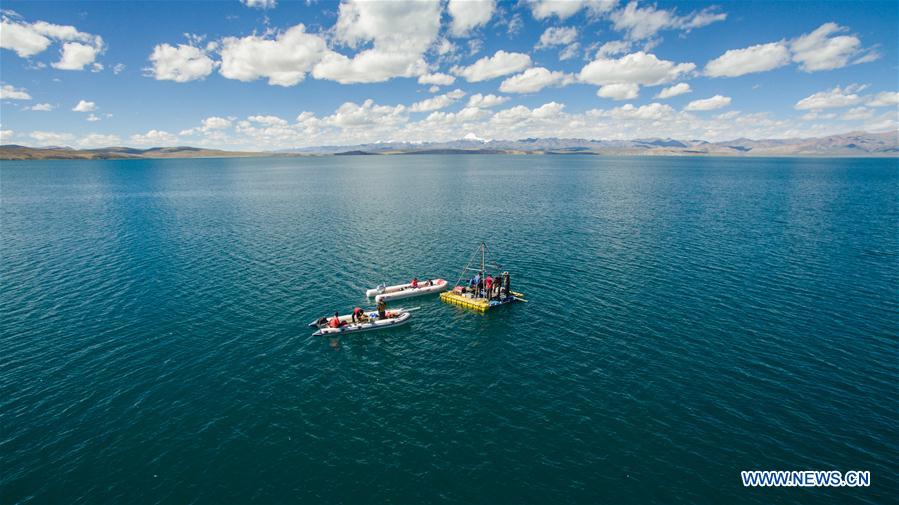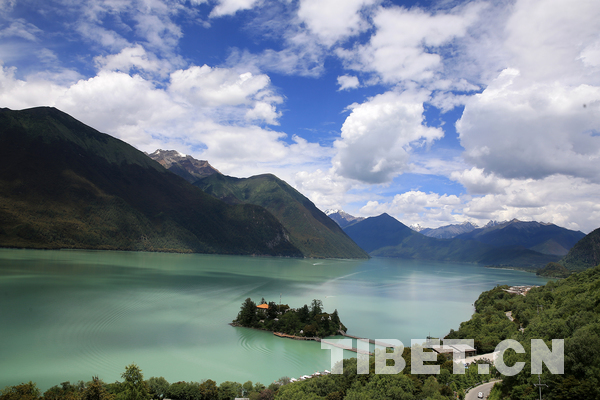New roads drawing Tibet cities closer
Gyaca county is only about 300 kilometers from Lhasa, Tibet. But a journey between them once took more than a day. The mud road studded with rocks was a big headache-not to mention the road winding around Kamba La Mountain, with cliffs above and below at an altitude of around 5,000 meters.
"It wasn't unusual to see accidents when crossing the mountain. In my worst experience, I spent 13 hours there. Even though I hadn't eaten, I didn't feel hungry at all because I had to concentrate on driving to avoid danger," said Tashi, 39, a Lhasa resident who has been driving for a living since 2005.
With paved roads, the journey now takes about six hours and is much safer and more comfortable, Tashi said.
Improvements to the road from Lhasa to Gyaca mirror the change in the traffic conditions in almost all of the Tibet autonomous region, and more changes are coming with increasing financial support from the central government.
More than 4,200 kilometers of highways have been built each year since 2012, increasing the current total mileage of highways in Tibet to more than 82,000 kilometers, according to Chen Chao, deputy head of Tibet's transport authority.
The investment in transportation in Tibet has increased by more than 40 percent each year from 2012 and reached more than 40 billion yuan ($6.1 billion) in 2016. The number is expected to reach 56 billion yuan this year, Chen said.
The highway in Medog county, the last Chinese county to be connected with highways, opened to traffic in 2013. All townships in Tibet are expected to be accessible by car before the end of this year.
There is less traffic in Tibet than in many other provincial regions in China. So, rather than build expressways, Tibet developed many high-grade highways-which are similar to expressways but much cheaper and with narrower emergency lanes. The total length of high-grade highways increased sixfold to 304 kilometers between 2012 and 2016, Chen said.
The huge investment and the improved traffic flow have contributed a lot to the economic growth of Tibet. In the past five years, the region's GDP grew by an average 11 percent. It also outperformed all other provincial regions in the first half of this year with year-on-year growth of 10.8 percent.
By 2020, Tibet's highways will reach 110,000 kilometers. It will take less than three hours for people to travel from Lhasa to four other major cities, Chen said.
"Once transport barriers are removed, there will be more commercial activities like logistics and tourism, thus improving local people's livelihoods."
Highways were not built at the expense of the environment. In many areas in Tibet, the construction of highways may actually help protect, rather than damage, the environment, he said.
Without highways, drivers often choose to drive on the smoothest places they can find-even on grassland, which damages it, he said.
Your Comment
Name E-mailRelated News
-
;
-
-

-
Tibetan cultural exchange delegation visits Sydney
A Tibetan culture exchange delegation dispatched by the State Council Information Office visited Sydney, Australia, from Aug 27 to 29.
-
-
-

-
Scientists inspect lakes and rivers on Qinghai-Tibet Plateau
Scientists and researchers participating in China's second scientific expedition of the Qinghai-Tibet Plateau have entered Ngari Prefecture in Tibet Autonomous Region.
-
-
-

-
Two highest ranking tourism attractions added to Tibet
The Basum Co Lake Scenic Area and the Tashilhunpo Monastery Sceneic Area in southwest China’s Tibet were approved as the two new 5A level tourism attractions.
-
Based in Lhasa, Tibet Vista is a Tibet travel agency that specialized in Tibet permit, and Tibet tours for both private and group travelers at a local price!
•4 Days Lhasa City Group Tour from USD 460 •8 Days Everest Base Camp Group Tour from USD 850 •15 Days Mt.Kailash Group Tour from USD 1780 •2016 Tibet Train Tours from Beijing, Shanghai, Chengdu, Xining,etc










